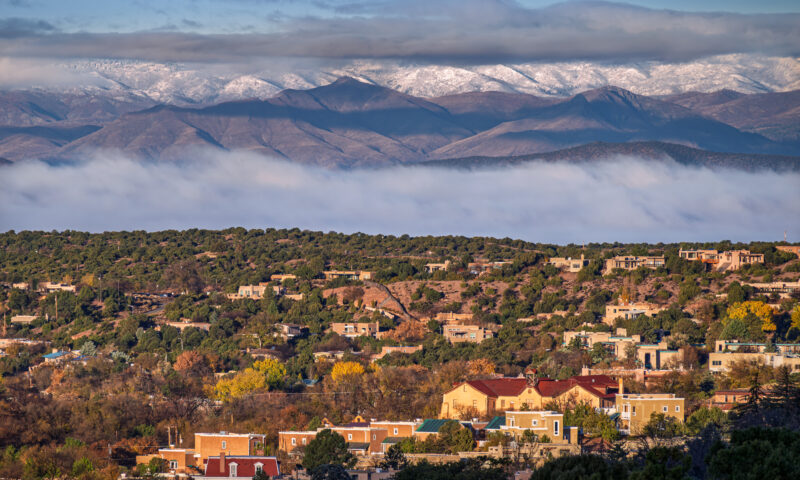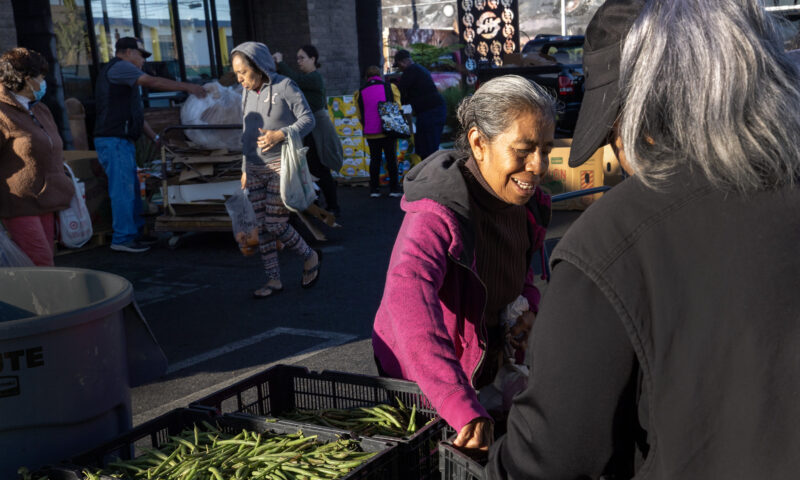Pandemic Nation
New Report Shows Where Economic Damage Has Been Worst
Lowest-paid workers take the worst hit while pandemic continues its damage.

The early stages of the COVID-19 crisis in America wiped out so many jobs so quickly that it could be difficult to focus on a single area of the damage. More than 20 million workers lost their positions between February and April of 2020 alone, a 15% decline.
Co-published by Newsweek
But from the start, experts in economic inequities had a dark feeling about where this might go even when recovery began. And new research by the Federal Reserve Bank of New York bears out that concern: A year later, low income workers remain on the outside of the job recovery picture looking in.
According to the report, issued Tuesday, employment for high wage workers – whom the New York Fed defines as those in jobs that typically pay $85,000 or more per year – had actually risen slightly above pre-pandemic levels by the end of 2020. But for those at the other end of the financial spectrum, working in jobs that typically pay less than $30,000, employment remained 14% below previous levels, and was trending downward amid a new winter wave of the virus and its variants.
The results follow some predictable patterns. Lower income earners fill the jobs in the kinds of industries that have been decimated by COVID outbreaks and restrictions, including the hotel and entertainment, airport and food service sectors. California has seen those areas take huge hits over the past year.
Jobs fallout from the pandemic continues to threaten families whose earnings are barely enough to cover needs in normal times.
But the study’s authors, Jaison R. Abel and Richard Deitz of the New York Fed’s Research and Statistics Group, make other points about the difficulty facing those in the lower income job market. “Lower wage workers have much less ability to work remotely – think food servers and cashiers – compared to higher wage workers, such as managers, accountants and attorneys,” they wrote. The study also cites new data by the Bureau of Labor Statistics showing that 57% of workers in the high wage group said they could telecommute to their jobs, compared with 7% of low wage workers.
The New York Fed report should add to the body of knowledge about the long-term damage being wrought on a vulnerable demographic in America. Jobs fallout from the pandemic continues to threaten the families of those whose earnings are barely enough to cover their needs during normal times.
Many of those families continue to rely on such emergency measures as California’s eviction moratorium and President Biden’s proposed stimulus package, which would include direct payments to households, enhanced unemployment compensation and help for some of the businesses that have been grounded during the pandemic. All of that relief, however, is temporary.
* * *
As a destination for both tourism and business, California has been particularly vulnerable to the pandemic’s effect upon the hotel industry. Hundreds of thousands of rooms suddenly went unoccupied, and it wasn’t long before the corporations owning the properties laid off the people who kept them running: cooks, housekeepers, janitors. Between that and the devastating effect of COVID and its subsequent restrictions on restaurants, nearly half a million jobs were swept away.
As the New York Fed study makes clear, both California and the rest of the U.S. experienced the worst of the damage from February to April 2020, and most parts of the country gained back significant chunks of the jobs that were lost during that period. Overall, a 15% decline in jobs in those early months had been trimmed to 5% by December.
But the winter wave of the virus, though long predicted, hit like a sledgehammer. California’s unemployment rate in December ticked up by 1% to 9% overall, its first increase since April. A driving factor? More than 117,000 jobs were lost in the leisure and hospitality sector, 83% of those in food and lodging, as the most restrictive tiers of activity were once again ordered around the state.
California’s most vulnerable workers wait for their industries to rebound to the point that they get the call to return to their jobs.
This grim reminder of how fleeting job gains can be may color Gov. Gavin Newsom’s approach as he considers how to restart the state’s economy in a post-pandemic world. The hotel and entertainment industry in the state is a huge financial engine, but there’s no reliable data to suggest how many hotels and restaurants will fully open or when.
“We’ll see a lot of hotel and restaurant jobs come back as we get the pandemic behind us,” Jeffrey Michael, of the University of the Pacific’s Center for Business and Policy Research, told the Bay Area News Group. “But you won’t see all those jobs come back. The hotel jobs connected to business travel and conventions won’t have as many jobs.”
Those represent losses at the very ground level of California’s economy, and they will further pressure both state and national resources dedicated to relief. And all of this assumes that Biden’s proposed relief package is passed as written, which would include $1,400 in checks to individual Americans.
Last month, as part of his 2021-22 budget proposal, Newsom called for the creation of Golden State Stimulus, a program designed to get $600 in rapid cash support directly to some 4 million lower income Californians. A report last week by the Legislative Analyst’s Office suggested making the payments bigger, but giving them to fewer people. In either case, nothing has yet happened.
In the meantime, the state’s most vulnerable workers wait for their industries to rebound to the point that they get the call to return to their jobs. The question facing Newsom and his struggling administration is whether California can cobble together enough relief and protection to keep those workers, and their families, hanging on.
Copyright 2021 Capital & Main

-

 StrandedNovember 25, 2025
StrandedNovember 25, 2025‘I’m Lost in This Country’: Non-Mexicans Living Undocumented After Deportation to Mexico
-

 Column - State of InequalityNovember 28, 2025
Column - State of InequalityNovember 28, 2025Santa Fe’s Plan for a Real Minimum Wage Offers Lessons for Costly California
-

 The SlickNovember 24, 2025
The SlickNovember 24, 2025California Endures Whipsaw Climate Extremes as Federal Support Withers
-

 Striking BackDecember 4, 2025
Striking BackDecember 4, 2025Home Care Workers Are Losing Minimum Wage Protections — and Fighting Back
-

 Latest NewsDecember 8, 2025
Latest NewsDecember 8, 2025This L.A. Museum Is Standing Up to Trump’s Whitewashing, Vowing to ‘Scrub Nothing’
-

 Latest NewsNovember 26, 2025
Latest NewsNovember 26, 2025Is the Solution to Hunger All Around Us in Fertile California?
-

 The SlickDecember 2, 2025
The SlickDecember 2, 2025Utility Asks New Mexico for ‘Zero Emission’ Status for Gas-Fired Power Plant
-

 Latest NewsDecember 1, 2025
Latest NewsDecember 1, 2025Accountable to No One: What 1990s L.A. Teaches Us About the Trump Resistance

